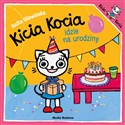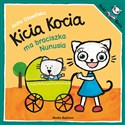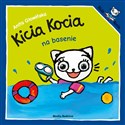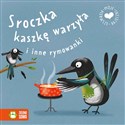PL: Książka bada proces ucztowania i biesiadowania, wraz z powstałymi wzorców komunikacji, rytualnego dramatu i ikonograficznej kreatywności. Studia przypadków analizują bawarskie groby datowane od XIII wieku p.n.e., skandynawskie kosztowności bagienne z IX w. p.n.e., komorowe groby kobiece ze wschodniej Austrii z VIII w. p.n.e., dziecięce groby łużyckie z VII wieku p.n.e., po scytyjskie kurhany z VI w. p.n.e. z obszarów Ukrainy i południowej Rosji. Opasłe opis starożytnej ideologii europejskiej wykazują, że społeczności niepiśmienne rozwijały zaskakująco żywe i wyrafinowane rozwiązania problemów związanych z przekraczaniem śmierci, oddawaniem czci przodkom i komunikowanie się pomiędzy ziemią a wiecznością.
EN: The nine interrelated chapters in this book aim to identify and describe the iconographies and trace fossils of ritual and religion in late prehistoric Europe – to infuse them with meaning, celebrate their complexity and integrate the ideas, which they evoke into the rich tapestry of historically transmitted ancient European and Mediterranean ideology, mythology and ritual. This book explores libation and feasting, engendered patterns of communication, ritual drama and iconographic creativity. Case studies range from 13th century BC Bavarian ostentatious graves, 9th century Scandinavian bog hoards, 8th century Austrian women’s chambered tombs, 7th century Lusatian children’s graves to 6th century BC Scythian kurgans from the Ukraine.
A thick description of ancient European ideology emerges demonstrating that non-literate communities were developing surprisingly vibrant and sophisticated solutions to the problems posed by transcending death, revering the ancestors and communicating between earth and eternity.
Informacja dotycząca wprowadzenia produktu do obrotu:
Ten produkt został wprowadzony na rynek przed 13 grudnia 2024 r. zgodnie z obowiązującymi wówczas przepisami (Dyrektywą o ogólnym bezpieczeństwie produktów). W związku z tym może on być nadal sprzedawany bez konieczności dostosowania do nowych wymogów wynikających z Rozporządzenia o Ogólnym Bezpieczeństwie Produktów (GPSR). Produkt zachowuje pełną legalność w obrocie, a jego jakość i bezpieczeństwo pozostają zgodne z obowiązującymi wcześniej standardami.
Information regarding product placement on the market:
This product was placed on the market before December 13, 2024, in accordance with the applicable regulations at the time (the General Product Safety Directive). As a result, it can continue to be sold without needing to meet the new requirements introduced by the General Product Safety Regulation (GPSR). The product remains fully compliant with all previously valid legal standards, ensuring its continued quality and safety.


























